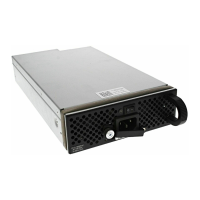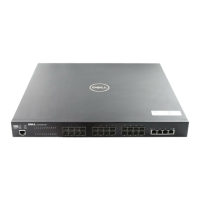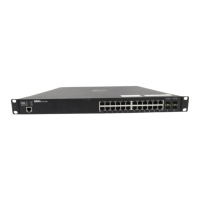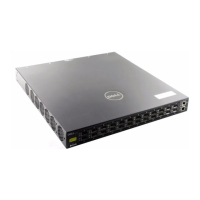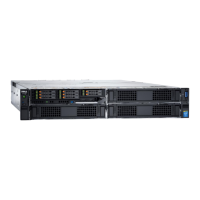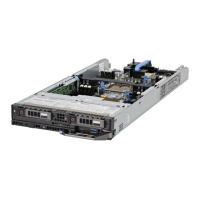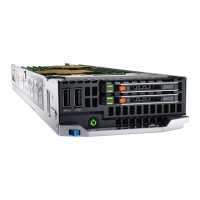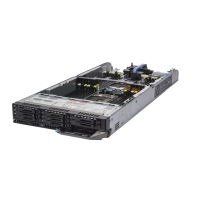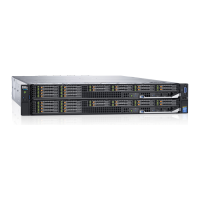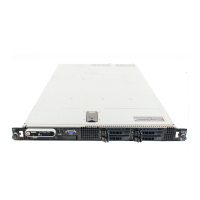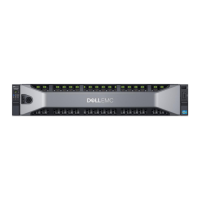556 | Stacking
www.dell.com | support.dell.com
Converting 4x10GbE Ports to 40GbE for Stacking
Stacking is supported only on 40GbE links by connecting 40GbE ports on the base module or a 2-Port
QSFP+ module. However, on a 2-Port 40GbE QSFP+ module, the ports operate by default in 4x10GbE
(quad) mode with breakout cables as eight 10GbE ports.
To change a port from 4x10GbE to 40GbE mode of operation for stacking, use the
no stack-unit port
portmode quad
command (Figure 31-7). After you convert the 4x10GbE ports to 40GbE, you must save the
configuration and reload the stack for the change to take effect.
Figure 31-7. no stack-unit port portmode quad Command Example
FTOS(conf)# no stack-unit unit-number port port-number portmode quad
Where:
stack-unit unit-number is the unit ID number in the stack unit. Valid values: 0 to 5. To display the stack-unit
number, use the
show system brief command.
port port-number specifies the port number of the QSFP+ port to be converted to 40GbE mode. Valid
values are: base-module ports: 33 or 37; slot 0: 41 or 45; slot 1: 49 or 53 (refer to Figure 31-5).
portmode quad identifies the port as a split 10GbE SFP+ port.
Removing a Port from the Stacking Mode
To remove a 40GbE port from the stack, use the no form of the stack-unit unit-number stack-group number
command. After entering the command, save the configuration and reload the stack for the change to take
effect.
FTOS Behavior: Stacking configuration is handled as follows on an MXL 10/40GbE Switch:
• If a stack unit goes down and is removed from the stack, the logical provisioning configured for the
stack-unit number is saved on the master and standby switches.
• When you add a new unit to the stack and the stack already has an existing member unit with the
same stack-unit number, the new unit is assigned the smallest available unit number (0 to 5). A
configuration mismatch between the newly added unit and a logically provisioned unit occurs in
the following situations:
• The logical provisioning for the unit number configures FlexIO module ports for
4x10GbE operation and the added unit has FlexIO Module ports operating in 40GbE
mode.
• 'The logical provisioning for the unit number and the added unit have different stack
groups configured.
When a configuration mismatch occurs, the newly added switch enters into a Card-Problem state
and is disabled. A syslog error message is generated. To restore a stacked switch in a
Card-Problem state, refer to Stack Unit in Card-Problem State Due to Configuration Mismatch.
• A stack unit can also enter a Card-Problem state after a split-stack reload in which a unit that was
previously neither the master nor standby is elected as the new master and has logical stack-unit
provisioning configured for a stack-unit number that creates a mismatch with the stack-unit num-
bering on other units.
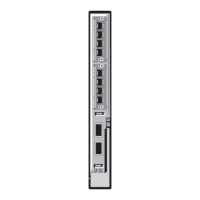
